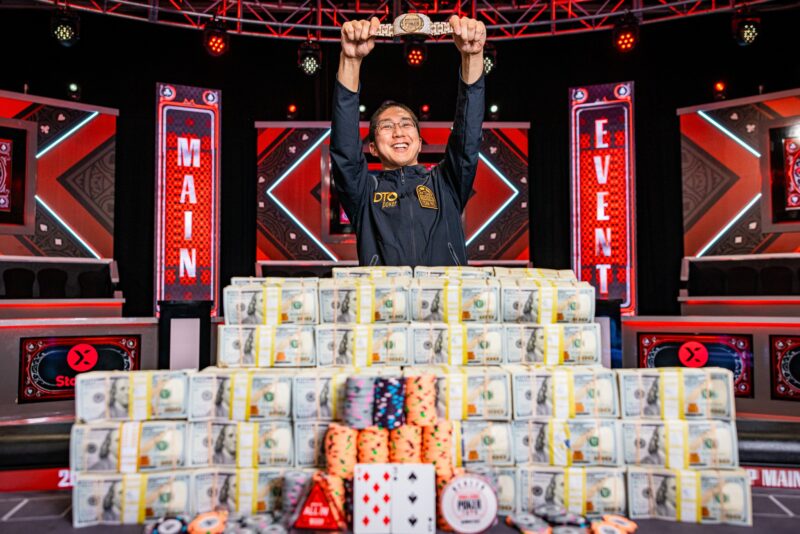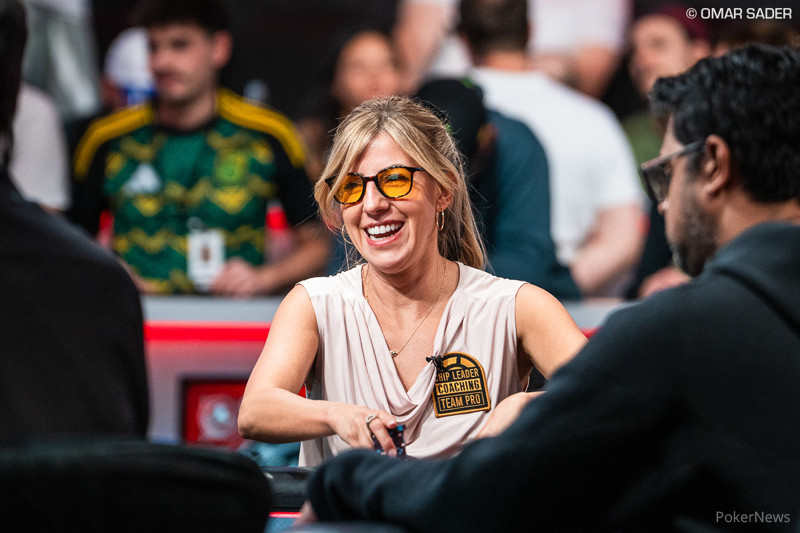I recently wrote an article about resisting the seductive desire to call in certain situations. This should be considered a companion piece. It’s about resisting the seductive desire to fold.

Players starting out in poker generally err on the side of calling too frequently and folding too seldom. They came to play and folding seems anathema to having a good time. So, they call – often to their stack’s destruction.
Poker literature geared toward those beginning players often focuses on just that proclivity. Readers are urged to play more selectively and to fold all but a relatively narrow range of playable hands. “Play a strong and narrow range, and play it aggressively” seems to be the one-sentence message of these books and articles.
Many of these instructional texts even feature a chart showing the few hands worth playing, and encouraging newbies to fold everything else, lest they be considered “calling stations.” In general, there’s nothing wrong with that message and it does many players some good to learn to break their habit of calling too much.
So, the problem isn’t in the message; it’s in the extreme application of it.
Put simply, some developing players fold too often. They play too narrow a range initially and they fold in too many situations as hands develop.
Take for example the beginning players who’ve learned about how some starting hands are stronger than others. They’ve seen the charts and the hand rankings, and conclude that they should only play JJ+ and AK. They take this message to heart, no matter their position, the number of players, or the playing style of their opponents.
They then apply this extremely narrow range robotically. They play so tightly preflop that their hands become obvious, and they’ll either fail to get any action or they’ll be easily outplayed on the flop, turn, and river.
These players are seeking to eliminate risk, even though accepting some risk is necessary for profitable play. To that end, it’s important to focus on the specific situation you’re in a given hand, and select your action accordingly.
Here are six situations when, your inclination to fold notwithstanding, you don’t have to fold.
1. An early position player raises and you have a substandard hand
You don’t have to fold. Let’s say you have a small pair. While there surely are times when a fold is the right move, under some circumstances, you can certainly call.Consider the size of the bet relative to your effective stack. If the bet is one 10th or less of your effective stack, you can call. Then, think about your opponent. If they’re the type of player who’s likely to stack off to you if you hit a set, or they’re someone that you, perhaps, can make lay down a hand with aggression on a later street, you can make that call.
2. You’re in late position, have missed the flop, and the preflop bettor bets
You don’t always have to hit your hand to continue to play on the flop because your opponent may well be betting without having hit his hand. Let’s say, for example, in a $1/2 game you have A♥ 9♥ in the cutoff and a middle-position player raises to $10. A couple of players call, as do you. The flop comes J♠ J♦ 2♣ – a complete whiff for you. The preflop raiser bets $25 into the $43 pot and the action folds to you.Sure, a fold is a reasonable option, but it’s not your only one. If you have a relatively tight image and your opponent is anything but completely unconventional, consider a raise here. If you raise, your opponent may well release his hand figuring you for trips or a slow-played higher hand.
He might well have missed too and have just been making a C-bet, in which case he will surely fold to your raise. If he calls your raise, you may still be able to take the hand from him on the turn, if he checks and you bet. At the very least, you will almost surely get to see the river for free as he will be very unlikely to bet into you on the turn.
3. You’re in early position on the flop, check, and a late-position player bets
Maybe you raise preflop with A♥ K♥ and got called by a few players. The flop missed you completely with something like T♠ 4♣ 3♦. You decide against C-betting with three opponents and your early position, so you check. The two players after you also checked and the button bet $25.Normally, you might fold, which isn’t a bad choice. But against a particularly aggressive opponent who rarely misses an opportunity to try to pick up an orphan pot, you might think about raising or floating his bet, and donk-betting the turn. It’s surely not an automatic move, but it’s worth considering as he may well release his hand when confronted with your unexpected aggression.
4. You’re the big blind, you don’t have a hand, small blind raises preflop after everyone else folds
Sure, your hand falls well outside any playable range that you’ve set for yourself and, typically, you’d fold. But some opponents can’t resist raising from the small blind in situations like this, even with no hand at all.Meanwhile, you’ll have position on your opponent throughout the hand. Once again, image can really help inform your decision here. If your opponent is particularly sticky, you might exploit them by calling and seeing if you hit a powerhouse on the flop – and then let them donk off their chips to you.
Your implied odds are so huge that you might profitably absorb their raise, even with a long-shot draw. On the other hand, if they’re weak-tight themselves, you might knock them off their hand with aggression on later streets, even if you miss. I’m not suggesting that you always play like this, but you shouldn’t automatically fold.
5. You raise in early position, button calls, you miss the flop and check, your opponent bets
This is usually an easy fold, but if your image is especially tight or otherwise weak, you might raise here. A check-raise in this spot may get all but the loosest or cleverest players to fold as they figure that a rock-tight player like you is unlikely to make such a move without a set.Similarly, you may have caught them trying to steal a pot from you. If that’s the case, your raise is likely to convince them that they shouldn’t continue with the hand.
6. You’re on the button preflop, there’s a 3-bet to you, and you don’t have AA or KK
In most low-limit games, a 3-bet means legitimate strength and, if you aren’t really loaded, you should probably fold. But in some games, and with some players, 3-betting means little; it’s often just a demonstration of aggression or an attempt to buy the button.If you have a fairly strong range, but not quite KK+, you can sometimes put in a 4-bet with what may be the best hand. Or, you can call if the 3-bet isn’t a large percentage of your stack and see if you can hit the flop or manipulate your opponents into folding on later streets.
Again, this isn’t an automatic play, but you don’t have to fold.
The key for all this is, that as you develop as a player, you need to move away from playing automatically and embrace a more thoughtful, situation-specific style of play.
Early on, folding might seem to be the best option in all situations when you don’t clearly have the best hand or a great draw. But the truth is, in certain situations where a fold may initially seem to be the best move, it’s just one option out of many that you can consider pursuing.


